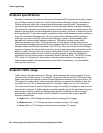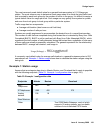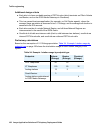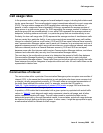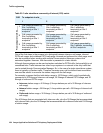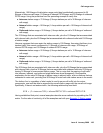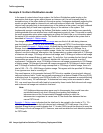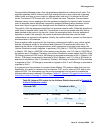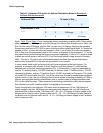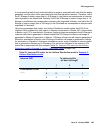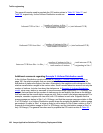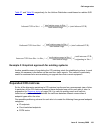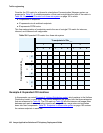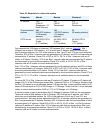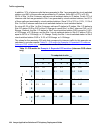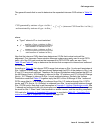
Traffic engineering
188 Avaya Application Solutions IP Telephony Deployment Guide
Again, Table 26 and Table 27 are constructed without considering overflow traffic.These tables
imply that the Site 1 PSTN trunks carry 98 Erlangs (49 inbound and 49 outbound) of traffic, the
Site 2 trunks carry 36 Erlangs, and the Site 3 trunks carry 16 Erlangs. Applying the standard
Erlang loss model with a P01 GOS to each of the three sites implies that at least 116 trunks are
needed in Site 1, at least 49 trunks are needed in Site 2, and at least 26 trunks are needed in
Site 3. Note that this constitutes a total of 191 trunks, as opposed to the estimate of 171 trunks
that was obtained without sizing the three trunk groups separately. A total of 171 could be used
to attain an overall grade of service of P01, but that would induce a large amount of intersite
traffic. The use of 191 total trunks, distributed between the three sites as specified above,
ensures that at least 99% of the calls are guaranteed to be intrasite.
In some cases, there might be factors that justify over-engineering the trunk groups. For
example, a customer who is based in North America most likely leases T1 trunk facilities
between each of its sites and the appropriate COs. In this example, it might be reasonable to
use five T1 facilities (that is, 120 DS0 channels) for Atlanta, three T1 facilities (that is, 72 DS0
channels) for Boston, and two T1 facilities (that is, 48 DS0 channels) for Cleveland. This yields
an overall GOS much better than P01, and at the same time, the use of standardized equipment
reduces costs. In fact, the use of Erlang’s loss formula implies a blocking probability of 0.004 in
Atlanta, and negligible blocking probabilities (that is, several orders of magnitude better than
P01) for the other two sites. These extremely low-blocking probabilities justify the assumption
that intersite trunk traffic (overflow traffic) is negligible in this example.
Finally, the entries for the intercom COI matrix must be determined. Of the 195 Erlangs of
station usage in that site, 49 Erlangs are associated with inbound calls, and 49 Erlangs are
associated with outbound calls. That leaves 195 - 49 - 49 = 97 Erlangs of station usage in the
Atlanta site for intercom calls. Similarly, there are 72 - 18 - 18 = 36 Erlangs of station usage in
the Boston site for intercom calls, and 34 - 8 - 8 = 18 Erlangs of station usage in the Cleveland
site for intercom calls.
Table 27: Outbound COI matrix for Uniform Distribution Model in Example 2:
Uniform Distribution model
Outbound CUR To trunks in Site __
1 2 3
From stations in Site
____
1
49 Erlangs 0 0
2
0 18 Erlangs 0
3
0 0 8 Erlangs



